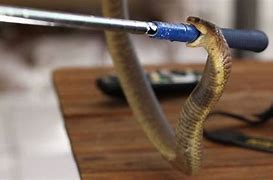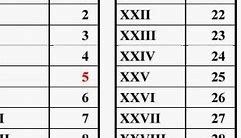
Health Benefits of Sockeye vs. Atlantic Salmon
When it comes to wild Alaskan sockeye vs. Atlantic salmon, sockeye is healthier across several considerations.
Due to a diet rich in krill, plankton, and small fish, wild salmon are naturally a good source of omega-3 fatty acids that can help stave off oxidative stress and support heart health. This diet is the reason why salmon are pink or red, indicating the presence of an antioxidant called astaxanthin. When wild salmon have access to clean ecosystems like those in Alaska fisheries, they’re also low in contaminants, meaning they’re a healthy and safe source of protein that anyone can include in their diet on a regular basis.
Because farmed salmon don’t have access to a wild diet, they are often fed soy-and-corn-based feed that must be supplemented with omega-3s and synthetic antioxidants. Without this supplementation, farmed salmon would naturally be deficient in omega-3s and appear a shade of gray, rather than pink or red.
Notably, farmed atlantic salmon, as well as wild sockeye sourced from the Pacific Northwest, can contain elevated levels of PCBs, dioxins, and pesticides, which have been associated with adverse health effects in humans. Infants, children, and women of child-bearing age are especially advised to limit their consumption of seafood with elevated levels of these toxins in order to protect their health.
What is sockeye salmon?
Sockeye salmon refers to a particular species of salmon, Oncorhynchus nerka, also commonly known as red salmon. It is a wild-caught species of Pacific salmon with habitats in and around Alaska, and as far south as the Pacific Northwest. Notably, Bristol Bay, located in Southwest Alaska, is home to the largest sockeye spawning ground in the world. Many know sockeye salmon as the crown jewel of the Alaskan fishing industry, because it’s the most economically important species of salmon in Alaska.
Sockeye salmon has been a critical source of food for communities on the Pacific coast for tens of thousands of years. Today, a majority of the sockeye that goes to market is from stocks in Alaska where fisheries are healthy and abundant. Populations in the Pacific Northwest are significantly smaller, due to habitat loss from hydroelectric dams and urban development, which poses a unique threat to the Native American tribes for whom salmon is both a cornerstone of their ancestral diet and culture.
Fisheries and consumption
The total registered fisheries harvest of the sockeye in 2010 was some 170,000 tonnes, of which 115,000 tonnes were from the United States and the rest was equally divided between Canada and Russia. This corresponds to some 65 million fish in all, and to some 19% of the harvest of all Pacific salmon species by weight.[35]
Commercial fishermen in Alaska net this species using seines and gillnets for fresh or frozen fillet sales and canning. The annual catch can reach 30 million fish in Bristol Bay, Alaska, which is the site of the world's largest sockeye harvest.[36]
Sockeye salmon have long been important in the diet and culture of the Coast Salish people of British Columbia.
The largest spawning grounds in Asia are located on the Kamchatka Peninsula of the Russian Far East, especially on the Ozernaya River of the Kurile Lake, which accounts for nearly 90% of all Asian sockeye salmon production,[37] and is recognized as the largest spawning ground outside of Alaska.[38] Illegal fishing in Kamchatka is subject to environmental concern.[39]
Sockeye is almost never farmed. A facility in Langley, BC harvested its first salmon in March 2013, and continues to harvest farmed salmon from its inland facility.[40][41]
United States sockeye salmon populations are currently listed under the US Endangered Species Act[42] by the National Marine Fisheries Service as an endangered species in the Snake River and as a threatened species in Lake Ozette, Washington. The Snake River sockeye salmon was listed as endangered in November 1991, after the Shoshone-Bannock Tribe at Fort Hall Indian Reservation petitioned the National Marine Fisheries Service.
Sockeye is an exception to 2010's forecast resurgence of Oregonian fish stocks. Spring Chinook, summer steelhead, and Coho are forecast to increase by up to 100% over 2008 populations. The sockeye population peaked at over 200,000 in 2008 and were forecast to decline to just over 100,000 in 2010. As an early indication of the unexpectedly high sockeye run in 2010, on July 2, 2010, the United States Army Corps of Engineers reported over 300,000 sockeye had passed over Bonneville Dam on the Columbia River. Lower temperatures in 2008 North Pacific waters brought in fatter plankton, which, along with greater outflows of Columbia River water, fed the resurgent populations.[43]
Proposed legislative efforts, such as the Northern Rockies Ecosystem Protection Act, are attempting to protect the headwaters of the sockeye salmon by preventing industrial development in roadless areas.
Record numbers of a once-waning population of sockeye salmon have been returning to the Northwest's Columbia Basin (as of June 2012), with thousands more crossing the river's dams in a single day than the total numbers seen in some previous years.[44]
The conservation status of sockeye populations in Canada is under review by Fisheries and Oceans Canada as part of its Wild Salmon Policy strategy to standardize monitoring of wild salmon status.[45] Salmon runs of particular note are the Skeena and Nass river runs, and the most famous is the Fraser River sockeye run.
The Fraser River salmon run has experienced declines in productivity since the 1990s, mirroring a similar decline in the 1960s.[46]
The return abundance (population) of Fraser River sockeye in 2009 was estimated at a very low 1,370,000,[47] 13% of the pre-season forecast of 10,488,000.[48] That represented a decline from the recent (1993) historical cycle peak of 23,631,000[49] and the return abundance was the lowest in over 50 years. The reasons for this (former) decline remain speculative. According to a consortium of scientists assembled to review the problem, the decline highlights the uncertainty in forecasting salmon returns.[50] After the low returns, the Government of Canada launched a formal inquiry into the decline, the Commission of Inquiry into the Decline of Sockeye Salmon in the Fraser River.[51][52]
The Commission has been tasked with investigating all the factors which may affect Fraser River sockeye salmon throughout their life cycle. According to the terms of reference,[51][52] the subjects of investigation are "the impact of environmental changes along the Fraser River, marine environmental conditions, aquaculture, predators, diseases, water temperature and other factors that may have affected the ability of sockeye salmon to reach traditional spawning grounds or reach the ocean."
During the commission, hundreds of thousands of documents and scientific research papers were reviewed. Twelve technical reports were published using that information, looking at the possible impacts of diseases and parasites, hatchery diseases, contaminants, marine ecology, salmon farms, fisheries, predators, climate change and government management on the productivity of Fraser River sockeye runs.[53][54]
While the commission was holding public hearings, in the late summer of 2010, the largest run of sockeye since 1913 returned to the Fraser River system.[55] Final counts show that approximately 30 million salmon returned to the Fraser River and its tributaries in 2010. In total, approximately 11,591,000 Fraser sockeye were caught by Canadian fishers and 1,974,000 Fraser sockeye were caught by American fishers. The final projected escapement (fish which were not caught) was 15,852,990 fish.[56]
Recent unpredictable fluctuations in runs are speculated to be due to changing water temperatures.[57] There is high variation in thermal tolerance among the different sockeye salmon populations that migrate up the Fraser River.[58] The Chilko River sockeye salmon population is able to maintain cardiorespiratory function at higher temperatures, which may make them more resilient to the effects of rising river temperatures. In one study examining possible physiological mechanisms underlying these population differences in thermal tolerance, juvenile sockeye salmon from the Chilko River and Weaver Creek did not show any differences in force-frequency response of the heart or cardiac pumping capacity when reared in common garden temperatures at 5 °C and 14 °C.[59] Therefore, the physiology underlying these differences in thermal tolerance has yet to be determined.
Spawning Kokanee salmon in the Sawtooth Range of Idaho
Male ocean-phase sockeye
Female (top) and male (bottom) in spawning colors
Sockeye salmon in Bristol Bay, Alaska
Closeup of a kokanee salmon
Sockeye salmon are native to the western coast of North America and reside in the northern Pacific Ocean.3 They spend most of their life at sea, but during mating season from July to October, they move inland—some populations as far as western Idaho—for spawning.1 Sockeye salmon hatch in lakes, rivers and streams where they spend their first few years until they develop into young salmon and migrate to the Pacific Ocean. However, there is one sub-species of sockeye salmon called Kokanee that are smaller and land-locked, and do not migrate to the ocean. In the Pacific Ocean, sockeye salmon can be found at depths of 15-33 meters.1 After spending two to three years at sea where they feed and grow, sockeye salmon return to freshwater to spawn, typically in the same stream where they hatched. During mating season, female sockeye salmon lay their eggs in a bed of gravel and then choose a male to fertilize them.1 Males present themselves to the female multiple times, and she judges them on their color and size, to choose the best father for her young.1
Sockeye salmon typically live around 4 to 5 years. Sockeye salmon reach reproductive age at 5 years and die after spawning.1 The oldest sockeye salmon ever caught was estimated to be 8 years old.1 Sockeye salmon are social fish and swim in runs together while making their way to mating grounds. They are also known to form social hierarchies during reproduction whereby the largest male fish are usually the most dominant.1 Sockeye salmon have great senses. Their strong sense of smell helps guide them back to their home stream.
Because of their large size, sockeye salmon are easily spotted by predators.1 Primarily, bears and birds predate on these salmon.1 Sockeye salmon are also some of the most commonly fished species in British Columbia, Canada and Alaska, United States. An important element to consider when talking about salmon as food, is their ability to reproduce. Currently there are many outdated, manmade dams that stand in the way of salmons’ ability to safely migrate upstream to spawning grounds. Hydroelectric dams1 specifically, catch and kill sockeye salmon as they attempt to swim through them—unsuccessfully. This clear problem with dams has led to the decline of many salmon populations including sockeye salmon and Chinook salmon. The U.S. Fish and Wildlife Service Species Report considers some sockeye salmon populations as threatened and endangered due to habitat degradation and overfishing.1 Overfishing is rapidly depleting many of the world’s fish populations. Oceana works to reduce overfishing by advocating for science-based catch limits, reducing harmful fishing subsidies, and stopping illegal, unreported and unregulated (IUU) fishing. We are campaigning to stop overfishing and promote sustainable fishing. Join Oceana to learn how you can help restore ocean abundance by stopping overfishing in our oceans.
Is sockeye salmon better than farmed Atlantic salmon?
Yes, when you compare the health impact and environmental effects of sockeye vs farmed Atlantic salmon. Sockeye salmon from Alaska is rich with nutrients from the wild and is more flavorful than farmed Atlantic salmon.
Farmed Atlantic salmon is fed dye to resemble wild salmon, but it’s much less flavorful. More importantly, farmed Atlantic salmon is contaminated with chemicals that can have a serious effect on your personal health. The practices espoused at a typical salmon farm also contaminate surrounding ecosystems and create competition for resources between farmed salmon and wild species.
Environmental Impact of Atlantic Salmon vs. Sockeye Salmon
Atlantic salmon farms are not self-contained. Rather than taking pressure off wild salmon, they actually put stress on wild fish populations.
Conventional salmon farms introduce pollution, pathogens, and toxic waste into their surrounding environments. Regarding the chemicals used in pens to control disease outbreaks, those inputs leak out into the ocean and seriously impact fish and other species in surrounding areas. The use of antibiotics in these pens to fight off diseases has also created antibiotic-resistant diseases and parasites in the wild.
When the omega-3 supplementation used in salmon feed is derived from wild forage fish, this pits farmed Atlantic salmon against wild species in a competition for resources. In addition, the engineered feed for farmed salmon is made from corn and soy, which may be sourced from industrial farms that pollute and dilute vital resources for other ecosystems.
Sockeye salmon thrive in the wild and don’t need antibiotics or artificial feed to stay healthy. As a keystone species, they’re integral to the health of their ecosystems, playing a key part in an intricate food web designed by nature.
In terms of sustainability, when sockeye salmon are harvested from well-managed wild fisheries like those in Alaska, wild fish populations remain healthy and abundant from season to season, and help to protect critical marine habitats. Well-managed wild fisheries can even help overfished populations recover and sustain themselves in the future.
Is sockeye salmon dyed?
There’s no reason for wild-caught sockeye salmon to be dyed because they naturally develop the vibrant red hues that we associate with salmon.
Sockeye get this color from a carotenoid called astaxanthin, an antioxidant found in abundance in their wild diet of shrimp, krill, and zooplankton. Of all the wild Pacific species of salmon, sockeye salmon is the variety with the boldest color in their flesh, as their diet is primarily zooplankton. Other species of Pacific salmon consume less of these food and more small fish, so they are subtler shades of pink, orange, and red.
How to Cook Sockeye Salmon
Regarding wild sockeye vs Atlantic salmon, wild-caught varieties generally take less time to cook because they’re leaner.
This is critical to note when cooking with salmon recipes that don’t specifically call for a wild species like sockeye. Most recipes treat farmed Atlantic salmon as the default choice, so cook times will correspond to farmed salmon. When cooking sockeye with these recipes, you should expect to reduce the total cooking time in order to avoid overcooking the fillet.
For recipes with cook times that are more accurate to wild sockeye salmon, explore some of Wild Alaskan Company’s favorite wild salmon recipes. Or, sharpen your wild salmon cooking skills with the help of step-by-step guides.
You may also find that you prefer lean, wild salmon cooked to a different doneness than farmed Atlantic salmon, so it’s worth looking over recommended internal cook temperatures for wild species.
The sockeye salmon (Oncorhynchus nerka), also called red salmon, kokanee salmon, blueback salmon, or simply sockeye, is an anadromous species of salmon found in the Northern Pacific Ocean and rivers discharging into it. This species is a Pacific salmon that is primarily red in hue during spawning. They can grow up to 84 cm (2 ft 9 in) in length and weigh 2.3 to 7 kg (5–15 lb). Juveniles remain in freshwater until they are ready to migrate to the ocean, over distances of up to 1,600 km (1,000 mi). Their diet consists primarily of zooplankton. Sockeye salmon are semelparous, dying after they spawn. Some populations, referred to as kokanee, do not migrate to the ocean and live their entire lives in fresh water.
Where to Buy Wild Sockeye Salmon Online
Listed as a Bristol Bay-certified sockeye salmon supplier, Wild Alaskan Company is a trusted source for wild-caught salmon, offering fillets of wild sockeye and coho salmon that are flash-frozen shortly after harvest, processed while frozen, and shipped frozen to your doorstep. Choose your salmon subscription box today to get high-quality, sustainably-caught seafood. Consider sharing the gift of wild salmon to friends and family. Sending the gift of Alaskan seafood to your loved ones is a thoughtful way to show you care.
What does Atlantic salmon taste like?
Farmed Atlantic salmon doesn’t pack the same punch as sockeye salmon. It is significantly less flavorful. Farmed Atlantic salmon is also much higher in fat.
The diet of farmed Atlantic salmon gives them an overabundance of omega-6 fatty acids. This is unnatural for the species, who become bloated and stressed. These characteristics result from their diet of pellets — typically engineered from soy and corn — which is deficient in the nutrients from the wild that give sockeye its rich qualities. These pellets are often supplemented with fish oils, but not nearly enough to match the fat ratios of a wild diet.
The fat profile of farmed Atlantic salmon can also be problematic for the humans who eat this fish on a regular basis. Diets with an excess of omega-6 fatty acids are associated with a higher risk of chronic illnesses. In contrast, diets that have higher ratios of omega-3 fatty acids (featuring foods like sockeye salmon) may lead to healthier outcomes.























